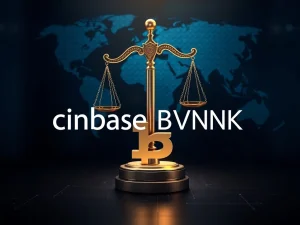Massive Surge: Stablecoin Payment Volume Hits $94B Driven by B2B Transfers

Are crypto payments becoming mainstream? Recent data suggests a significant shift, particularly with stablecoins. If you’re involved in the crypto space, understanding where the real-world adoption is happening is crucial. The latest report highlights a massive increase in stablecoin payment volume, pointing towards growing utility beyond trading.
Decoding the Stablecoin Payment Volume Numbers
New data from Artemis reveals that a substantial $94.2 billion in stablecoin payment volume was settled between January 2023 and February 2025. This figure underscores the increasing reliance on stablecoins for various transaction types. The report breaks down this volume, showing where stablecoins are gaining the most traction:
- Business-to-Business (B2B) Transactions: This sector accounts for the largest share, with an annual run rate of $36 billion. This indicates that companies are increasingly using stablecoins for their operational needs and inter-business settlements.
- Card-Linked Payments: Stablecoins linked to payment cards have also seen significant growth, exceeding $13.2 billion in annual volume. This area represents a key bridge between the crypto world and traditional consumer spending.
The report concludes that stablecoins are establishing themselves as significant components of the global payment infrastructure.
Who is Leading the B2B Transfers and Where?
When it comes to stablecoin usage for B2B transfers and other payments, some key players and networks stand out. Users show a clear preference for certain stablecoins and blockchains.
- Stablecoin Preference: Tether’s USDT (USDT) is the dominant stablecoin used for payments, with Circle’s USDC (USDC) holding a distant but solid second position.
- Blockchain Usage: Tron and Ethereum are the leading blockchains facilitating stablecoin payments, followed by Binance Smart Chain.
Interestingly, the average size of B2B transfers on Tron and Ethereum is significantly higher, exceeding $219,000 per transaction. This contrasts with much smaller B2B transaction sizes observed on other blockchains, suggesting these networks are favored for larger corporate settlements.
Why the Growing Interest in Stablecoin Volume?
The increasing stablecoin volume isn’t just attracting crypto enthusiasts. Governments and traditional financial institutions are also taking notice. The stablecoin market cap itself reached $247.3 billion recently, showing over 54% growth in the past year.
The utility of stablecoins for efficient cross-border payments, remittances, and commerce is a major draw. This potential is prompting regulatory action and exploration by traditional finance:
- Regulatory Efforts: Countries like the United Arab Emirates and the European Union have already implemented regulations allowing certain stablecoin issuers to operate. In the United States, lawmakers are working towards legislation to regulate these assets, aiming to solidify the dollar’s role in the digital economy.
- Bank Exploration: Reports indicate that major US banks are in early discussions about potentially launching a joint crypto stablecoin. This signals a growing recognition of stablecoins’ potential within the traditional banking system.
- Corporate Adoption: Payment platforms like Stripe are also integrating stablecoins, introducing stablecoin accounts to users in over 100 countries.
What About Non-Dollar Stablecoins?
While USDT and USDC dominate, there’s also increasing interest in stablecoins not backed by the US dollar. Experts note that governments outside the US are showing growing interest in stablecoins pegged to other currencies. This suggests potential future diversification in the stablecoin landscape.
Conclusion: Crypto Payments Finding Their Footing
The data clearly shows that stablecoin payments, particularly for B2B transfers, are gaining significant traction. The impressive $94 billion in stablecoin volume demonstrates a tangible use case for digital assets in the real economy. As regulatory clarity emerges and traditional institutions explore the space, the role of stablecoins in the global payment system is likely to expand further. This growing adoption, led by players like USDT and networks like Tron and Ethereum, solidifies stablecoins as a vital bridge between traditional finance and the evolving world of crypto payments.







